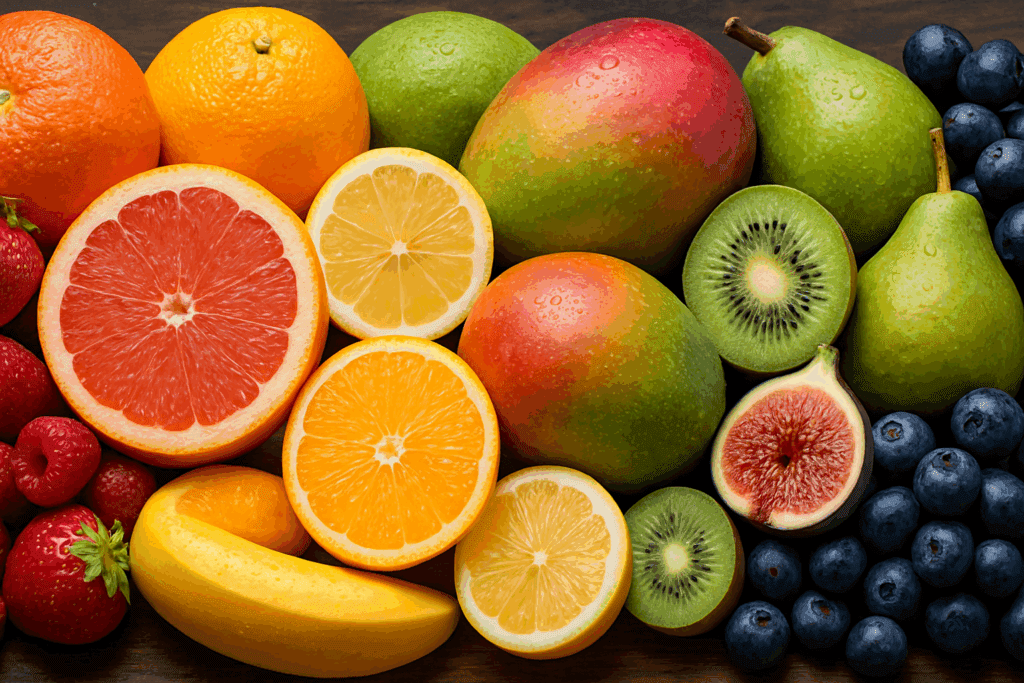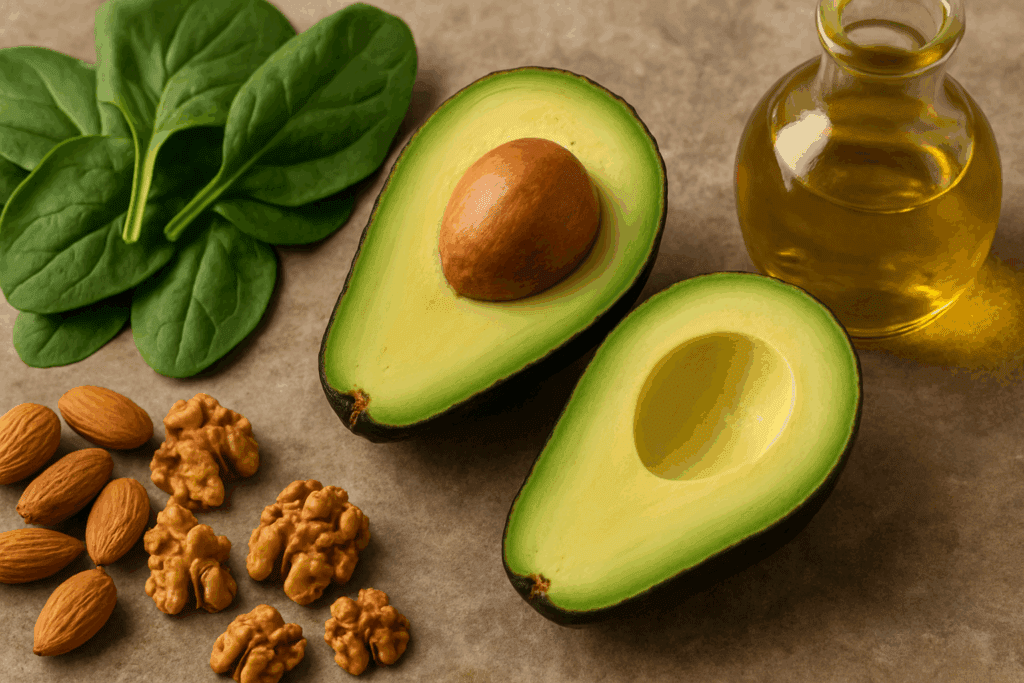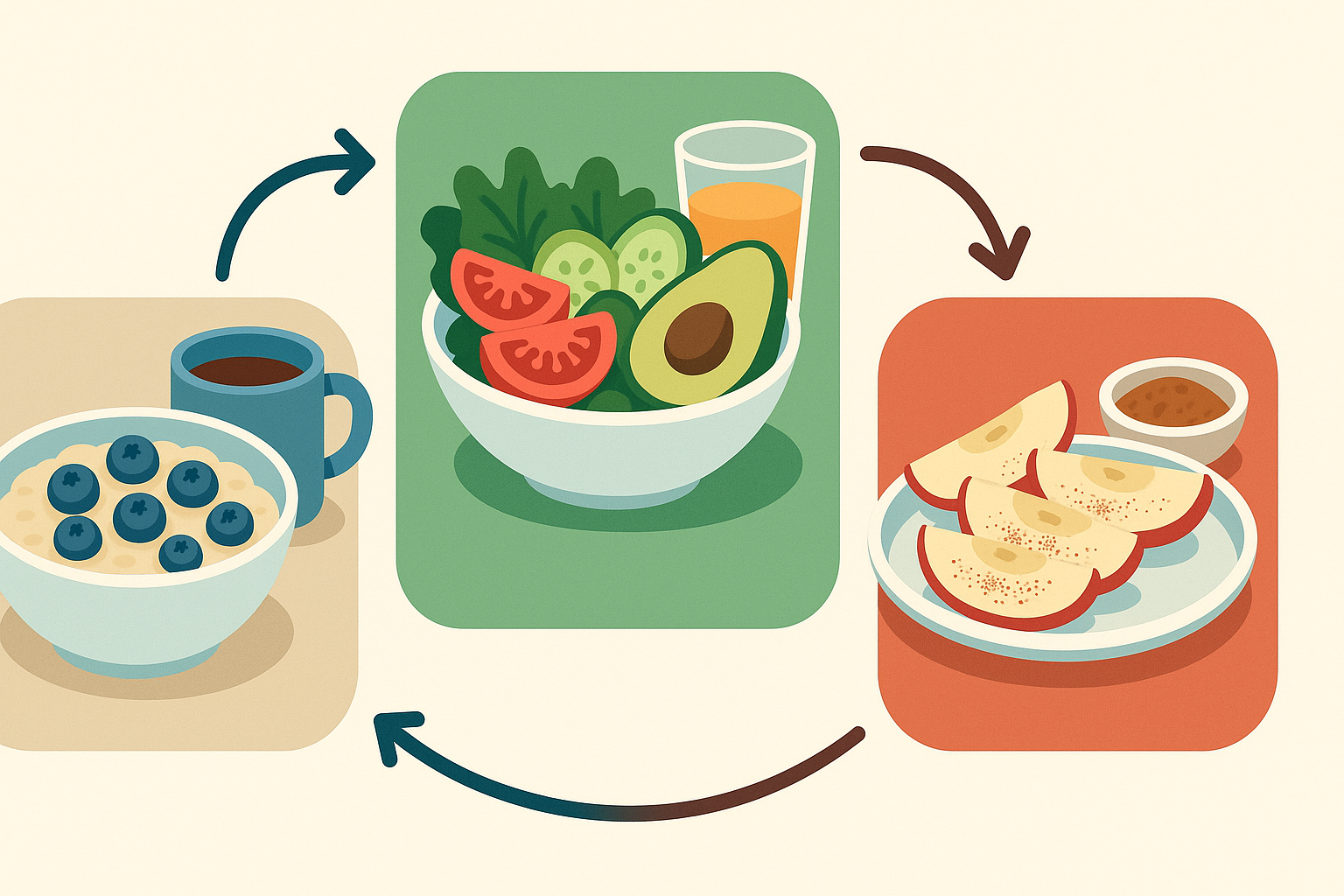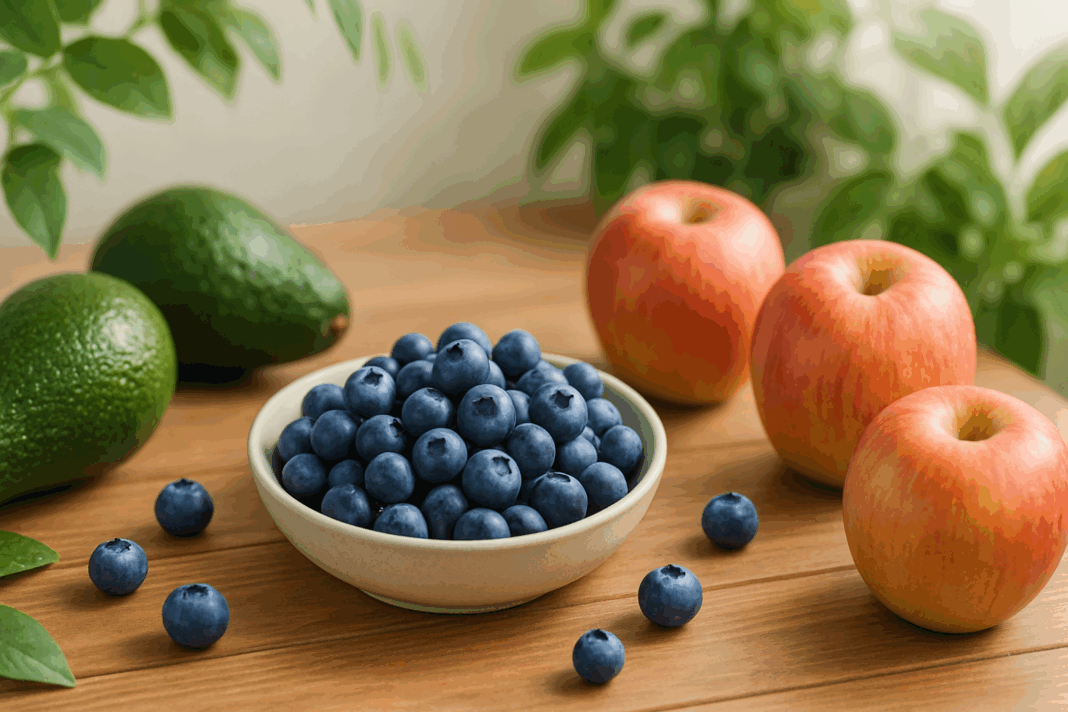Fruits have always occupied a vital place in the human diet. Their vibrant colors, diverse flavors, and rich nutritional profiles make them not only delicious but also essential for long-term health and vitality. In an age when chronic disease prevention and holistic wellness are priorities, understanding which fruits deliver the highest health dividends is more important than ever. The question arises: what are the 3 fruits that every nutritionist agrees should be staples in our daily intake?
You may also like: 4 Ways to Have a Healthy Diet: Expert Tips Backed by Science for Better Nutrition and Long-Term Wellness
Though a wide array of fruits offers incredible health benefits, certain selections stand out because of their unparalleled nutrient density, broad-spectrum antioxidant activity, and clinically proven roles in disease prevention. This article delves deeply into the science behind the most consistently recommended fruits—those that have earned the respect of dietitians, physicians, and longevity researchers alike. We will examine why these three fruits rise to the top in discussions about daily health support, anti-aging, and disease resistance, while also reflecting on the broader context of dietary patterns and the role of “all the fruits” in comprehensive nutrition.
Why Fruits Are Foundational for Health and Longevity
To understand why certain fruits carry so much weight in medical nutrition therapy and preventive health, one must consider the overall role of fruits in the human diet. Fruits offer a unique combination of vitamins, minerals, fiber, water, and phytochemicals—bioactive compounds that exert health-promoting effects at the cellular level. From polyphenols and flavonoids to carotenoids and resveratrol, these compounds work synergistically to support immunity, reduce inflammation, protect DNA from oxidative damage, and enhance cellular repair mechanisms.
Fruits also provide naturally occurring sugars, such as fructose, which, unlike refined sugars, are delivered in a matrix of fiber and micronutrients that mitigate blood sugar spikes and reduce glycemic load. This is particularly important for metabolic health and insulin sensitivity. Furthermore, epidemiological studies have repeatedly shown that diets high in fruit intake are associated with lower risks of cardiovascular disease, certain cancers, neurodegenerative conditions, and all-cause mortality.
Importantly, the diversity of plant compounds across different fruits emphasizes the importance of variety. While one might wonder about what are the 3 fruits that stand above the rest, it is also essential to remember the power of consuming a colorful range. This is where the phrase “all the fruits” becomes significant—not just as a poetic turn of phrase, but as a nutritional philosophy underscoring diversity and synergy.

Blueberries: The Brain-Boosting Powerhouse
Among the pantheon of fruits, blueberries have emerged as a superstar in the arena of cognitive health and anti-aging. Rich in anthocyanins, a subclass of flavonoids responsible for their deep blue hue, blueberries possess potent antioxidant and anti-inflammatory properties. These compounds cross the blood-brain barrier and localize in brain regions involved in learning and memory.
Numerous clinical trials have explored the cognitive benefits of blueberry supplementation. One landmark study published in the Annals of Neurology found that greater blueberry consumption correlated with slower rates of cognitive decline in older adults. Another randomized controlled trial demonstrated that older individuals who consumed blueberry juice daily for 12 weeks experienced improvements in memory function and verbal recall.
Blueberries also show promise in reducing the risk of cardiovascular disease. They support endothelial function, help lower blood pressure, and improve cholesterol profiles. Their polyphenols have been shown to favorably alter gut microbiota, further linking them to systemic benefits beyond just brain health. When people ask, “what are the 3 fruits that should be on my daily plate?” blueberries often earn a top spot for these multifaceted protective effects.
In addition to their functional properties, blueberries are low in calories yet rich in nutrients like vitamin C, vitamin K, and manganese. Their versatility in meals—from smoothies and salads to oatmeals and yogurts—makes them easy to integrate into any dietary pattern. When considering how to include fruits fruits fruits into one’s day, starting with blueberries is both delicious and strategic.

Apples: A Daily Dose of Digestive and Cardiometabolic Support
Few fruits have enjoyed as much cultural and scientific praise as the apple. The well-known saying, “an apple a day keeps the doctor away,” has its roots in nutritional wisdom backed by research. Apples are a rich source of both soluble and insoluble fiber, particularly pectin, which has been shown to support digestive health by feeding beneficial gut bacteria and promoting regular bowel movements.
The polyphenols in apples, especially quercetin, have powerful anti-inflammatory and antioxidant properties. These compounds help reduce systemic inflammation, a driver of many chronic diseases, including heart disease and diabetes. Apple consumption is also linked with improved lipid profiles, reduced blood pressure, and enhanced endothelial function, making them a valuable ally in cardiovascular prevention.
From a glycemic standpoint, apples offer a moderate sugar content balanced by fiber, which slows glucose absorption and promotes satiety. This makes them an excellent fruit for blood sugar regulation, especially for individuals managing insulin resistance or metabolic syndrome. When asked about what are the 3 fruits most compatible with diabetic-friendly eating patterns, apples often make the list.
Moreover, apples are accessible year-round and come in a wide variety of cultivars, each with slightly different nutrient compositions and flavor profiles. Their portability and shelf stability make them a convenient snack, supporting consistent fruit intake throughout the day. As part of a comprehensive dietary strategy involving all the fruits, apples hold a central role due to their widespread availability and evidence-based benefits.

Avocados: The Fat-Rich Fruit for Heart and Hormonal Health
While not traditionally sweet, the avocado is technically a fruit—and one that offers a nutritional profile unlike any other. Rich in heart-healthy monounsaturated fats, avocados support cardiovascular function, hormone balance, and satiety. They are particularly high in oleic acid, the same fatty acid found in olive oil, which has been linked to reduced inflammation and improved lipid profiles.
Avocados are also abundant in potassium—containing even more per gram than bananas—which helps regulate blood pressure and fluid balance. Additionally, they are a source of folate, vitamin K, vitamin E, and various B vitamins, all of which support cellular repair, detoxification pathways, and metabolic function. Their high fiber content (both soluble and insoluble) aids in digestion, regulates bowel movements, and promotes a favorable gut microbiome.
One unique advantage of avocados is their role in nutrient absorption. Their healthy fat content enhances the bioavailability of fat-soluble vitamins like A, D, E, and K when eaten with other foods. This makes them a valuable addition to meals containing salads, roasted vegetables, or grains. For those focused on hormonal balance—whether related to thyroid health, reproductive function, or stress resilience—avocados provide essential lipid-based building blocks.
In a world where the phrase “fruits fruits fruits” often evokes images of sugary snacks, the inclusion of avocados expands our understanding of fruit as a category. They challenge us to rethink what constitutes a health-promoting fruit and exemplify the diversity of nature’s offerings. Among what are the 3 fruits most vital for daily well-being, avocados provide a rich and necessary counterbalance to their more carbohydrate-heavy counterparts.
The Case for Variety: Why All the Fruits Still Matter
While highlighting what are the 3 fruits every nutritionist recommends is helpful for focused guidance, it is crucial not to overlook the power of diversity. No single fruit—or trio of fruits—can deliver the full spectrum of vitamins, minerals, phytonutrients, and enzymes the human body needs. That’s where the concept of “all the fruits” becomes not just a catchy phrase but a scientific imperative.
Oranges offer high doses of vitamin C and citrus bioflavonoids that support immune function and collagen synthesis. Bananas deliver fast energy and replenish electrolytes, especially after physical activity. Pomegranates contain punicalagins, powerful antioxidants that enhance vascular health. Papayas supply digestive enzymes like papain, aiding in protein breakdown and nutrient assimilation. These examples illustrate how incorporating all the fruits over time helps round out nutritional gaps and ensures a robust intake of health-promoting compounds.
Seasonal variation also plays a key role. Eating fruits according to the seasons ensures a dynamic rotation of nutrients and exposes the gut microbiome to a broader array of prebiotic fibers and polyphenols. This seasonal eating pattern mimics ancestral diets and contributes to metabolic flexibility, immune resilience, and reduced food sensitivities.
Furthermore, embracing a wide variety of fruits fosters sustainability in food systems. By choosing local and seasonal fruits, consumers reduce their carbon footprint and support biodiversity in agriculture. In this broader sense, all the fruits support not just individual health but planetary well-being—a concept increasingly embraced in modern nutrition discourse.

Making Fruits a Daily Habit: Practical Strategies and Meal Integration
Even the best nutritional advice falls short if not translated into practical action. For many people, the challenge lies not in knowing what are the 3 fruits they should eat, but in making fruit consumption a consistent, enjoyable part of daily life. Fortunately, integrating fruits into meals and snacks can be both simple and satisfying.
Breakfast is a natural place to start. Blueberries can be added to overnight oats, yogurt parfaits, or blended into smoothies. Apples pair beautifully with nut butter or can be diced into whole grain cereals for added texture and sweetness. Avocados can be smashed onto toast, paired with eggs, or folded into breakfast burritos for a savory and satisfying morning boost.
Lunch and dinner offer additional opportunities. Avocado can feature in salads, grain bowls, or even blended into sauces. Apples provide crunch and sweetness to slaws or grain-based pilafs. Blueberries can surprise the palate when tossed with leafy greens, goat cheese, and walnuts in a vibrant salad. Snacking is another strategic touchpoint; keeping pre-cut fruit accessible in the fridge or carrying a piece of fruit to work can promote healthy choices during energy slumps.
Batch prepping fruit-forward snacks or desserts—such as chia puddings with berries, apple slices with cinnamon, or avocado chocolate mousse—can help meet nutritional goals while satisfying cravings. Ultimately, incorporating fruits fruits fruits into one’s day becomes not just a habit, but a form of self-care that nourishes body, mind, and palate alike.

Frequently Asked Questions (FAQ): What Are the 3 Fruits Every Nutritionist Recommends for Daily Health and Longevity?
1. Can consuming these 3 fruits daily improve mood and mental health?
Yes, integrating what are the 3 fruits—blueberries, apples, and avocados—into your diet maycontribute significantly to mental well-being. Blueberries are rich in flavonoids that have been linked to improved cognitive function and mood stabilization. Apples support gut health through their pectin content, and emerging research highlights the gut-brain axis as a crucial factor in emotional regulation. Avocados, with their high folate content, help prevent the buildup of homocysteine, a compound associated with depression when elevated. Including all the fruits in your rotation provides a full spectrum of nutrients that nourish both mind and body, reinforcing the idea that fruits fruits fruits are as powerful for mood as they are for metabolism.
2. Are there differences in health benefits based on the fruit variety within each of the top 3?
Absolutely. When discussing what are the 3 fruits every nutritionist endorses, it’s worth noting thatvariety within each fruit can affect nutrient density. For instance, Granny Smith apples are lower in sugar and higher in fiber compared to Red Delicious. Similarly, wild blueberries contain more antioxidants than cultivated ones. Hass avocados, the most common variety, tend to have a higher monounsaturated fat content than others. Exploring all the fruits within these three categories enriches the diet and allows for tailored choices based on individual health needs. The diversity within fruits fruits fruits isn’t just about taste—it’s also about optimized nutrition.
3. How do these fruits interact with other foods to enhance nutrient absorption?
The synergistic effects of these fruits when paired with other foods are remarkable. Avocados, forexample, improve the absorption of fat-soluble vitamins such as A, D, E, and K when consumed alongside vegetables. Blueberries can increase the antioxidant uptake from whole grains when included in breakfast meals. Apples, due to their fiber and polyphenols, may slow the digestion of carbohydrates in mixed meals, supporting stable blood sugar levels. Including what are the 3 fruits with other nutrient-dense foods ensures your body extracts maximum benefit. In the context of eating all the fruits, these interactions highlight how fruits fruits fruits are team players in comprehensive nutritional strategies.
4. What are some underexplored culinary uses for these three fruits?
Beyond smoothies and salads, there’s a world of innovative uses for what are the 3 fruits in gourmetand everyday cooking. Blueberries can be reduced into savory glazes for meats or stirred into grain-based pilafs. Apples lend themselves to chutneys, fermented beverages, or even spiralized as a base for pasta alternatives. Avocados can be whipped into frostings, blended into dressings, or used as a fat substitute in baked goods. When you allow creativity to guide your use of all the fruits, new dimensions of flavor and health benefits emerge. Transforming fruits fruits fruits into diverse meals adds excitement and nutrition to the plate.
5. How can someone with a fruit intolerance still benefit from fruit-based nutrition?
For individuals with sensitivities or intolerances, understanding alternatives is key. If one of what arethe 3 fruits causes issues—for example, apple allergies are not uncommon—other fruits with similar phytonutrient profiles may be substituted. Pears can offer similar fiber benefits, while berries other than blueberries can provide antioxidant support. Those sensitive to avocados might tolerate olive oil or tahini, which also provide healthy fats. Incorporating a variety of all the fruits allows for rotation and reduces the risk of developing intolerances due to overexposure. Flexibility with fruits fruits fruits can still yield robust health benefits, even when substitutions are necessary.
6. What is the long-term impact of consistently eating these fruits over decades?
Longitudinal studies suggest that the sustained consumption of what are the 3 fruits is associated withdecreased risk for chronic illnesses such as cardiovascular disease, cognitive decline, and type 2 diabetes. Over time, the anti-inflammatory and antioxidant effects of these fruits may help preserve telomere length, a biomarker for biological aging. The fiber in apples and avocados also supports gut microbiome diversity, which is increasingly recognized as a cornerstone of systemic health. When you regularly consume all the fruits—especially those with well-documented functional properties—the cumulative benefits manifest in better aging outcomes. Adopting fruits fruits fruits as dietary staples is a proactive investment in lifelong wellness.
7. How do environmental factors impact the nutritional quality of these fruits?
The growing environment—including soil health, water availability, and sunlight—can significantlyinfluence the nutritional profile of what are the 3 fruits. For example, organically grown blueberries often have higher phenolic content due to natural stress responses. Apples exposed to greater sun exposure may develop thicker skins with more flavonoids. Avocados grown in mineral-rich volcanic soils tend to be more nutrient-dense. This variation underscores the value of sourcing fruits locally and seasonally when possible. Supporting local agriculture ensures access to all the fruits at peak nutritional value, strengthening the power of fruits fruits fruits as health-enhancing foods.
8. What role do these fruits play in managing stress and supporting hormonal balance?
There’s growing interest in the role of what are the 3 fruits in hormonal regulation and stressresilience. Avocados support adrenal function through their vitamin B5 content, crucial for cortisol production and stress response. Blueberries provide anthocyanins that modulate the hypothalamic-pituitary-adrenal (HPA) axis, which governs stress hormones. Apples, rich in fiber and polyphenols, can stabilize insulin—a hormone central to energy balance and metabolic health. When included regularly, all the fruits can help buffer against hormonal imbalances triggered by chronic stress. Integrating fruits fruits fruits into stress-management routines may be a delicious and scientifically grounded strategy for emotional equilibrium.
9. How does fruit intake affect athletic performance and recovery?
For athletes, the strategic use of what are the 3 fruits can enhance both performance and recovery.Blueberries reduce exercise-induced oxidative stress and may support faster muscle recovery post-training. Apples provide slow-digesting carbohydrates and antioxidants that support sustained energy and reduce muscle fatigue. Avocados, rich in potassium and healthy fats, aid in electrolyte balance and joint lubrication. Athletes who include all the fruits in their training diets often report improved endurance and reduced inflammation. Whether preparing for a race or recovering from a workout, fruits fruits fruits offer targeted benefits for peak physical performance.
10. Could these fruits support disease prevention in high-risk populations?
Yes, numerous clinical studies support the role of what are the 3 fruits in preventive nutrition forpopulations at risk for chronic illness. For instance, elderly adults with cognitive vulnerabilities may benefit from daily blueberry intake to support brain health. People with metabolic syndrome may find apples helpful in reducing triglyceride levels and improving insulin sensitivity. Individuals with hypertension often benefit from the high potassium content of avocados. When taken together with a wide variety of all the fruits, these three powerhouses form a frontline defense against age-related and lifestyle-driven diseases. Framing fruits fruits fruits as a foundation for preventive care aligns with modern, evidence-based medical guidance.

Final Reflections: Why These 3 Fruits—and All the Fruits—Matter for a Long, Healthy Life
In the ongoing journey toward optimal health, knowing what are the 3 fruits that nutritionists universally recommend provides a powerful starting point. Blueberries, apples, and avocados each bring unique strengths to the table, offering a balanced trio of antioxidant defense, digestive support, metabolic regulation, and cardiovascular protection. Together, they exemplify the principles of functional nutrition—where food is used not just for sustenance, but as targeted medicine for the body and mind.
At the same time, the broader lesson is clear: diversity matters. All the fruits contribute to a symphony of nourishment that no single item can replicate. While prioritizing a daily intake of superstar fruits can yield measurable health benefits, rotating through seasonal, colorful, and culturally diverse fruits deepens the nutritional impact. This inclusive approach aligns with current understanding in systems biology, gut ecology, and integrative medicine.
As we embrace a lifestyle that centers whole, plant-rich foods, let us not reduce fruit to just a few high performers. Instead, let us celebrate the full spectrum—fruits fruits fruits in all their forms, colors, and textures. In doing so, we honor not only the wisdom of nutrition science but also the richness of the natural world. Whether you are seeking to prevent chronic disease, enhance vitality, or simply enjoy your meals more fully, the path forward is clear: start with these three essential fruits, and then welcome all the fruits into your daily rhythm of nourishment and joy.
Further Reading:
Nutritionist-approved 5 fruits that improve longevity and heart health
10 Fruits You Should Eat Every Week, According to a Dietitian


